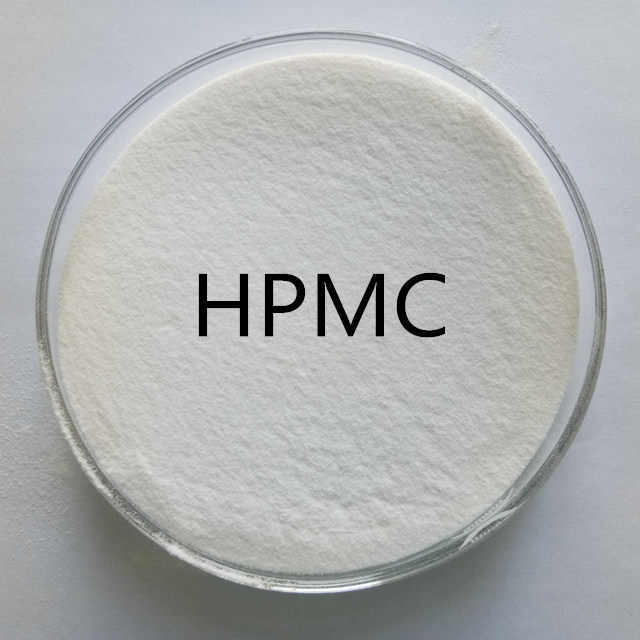Name: Hydroxypropyl MethylCellulose(HPMC、MHPC)
Other Name: Cellulose hydroxy propyl methyl ether; Hypromellose, Cellulose, 2-hydroxypropyl Methyl ether. Cellulose hydroxypropyl methyl ether Hyprolose;
CAS Registry Number:[ 9004-65-3]
Hydroxypropyl Methyl Cellulose (HPMC) is non-ionic cellulose ether made from natural cotton fiber under series of chemical processing. It’s odorless, tasteless and non-toxic white powder, can be dissolved in cold water to form a transparent viscous solution with the properties of thickening, binding, dispersing, emulsifying, film coating, suspending, absorbing, gelling, water retention and colloid protection.
Physical Properties:
1. Appearance: HPMC is a nonionic cellulose ether, white grayish-white powder or granule,odorless and flavorless, soluble in cold water, glacial acetic acid, ethanol, methanol and propylene glycol, slightly soluble in acetone depending on the degree of substitutions, practically insoluble in hot water, ethylene glycol and toluene. HPMC is dissolved in a mixture of 10% methanol and 90% methylene chloride to form colloidal solutions.
2. The solution of HPMC has surface activity, high transparency, and stable performance. When heated at certain temperature, the solution becomes cloudy or forms flocculent gel. However, the solution becomes clear again after cooling. Different types of HPMC have different gelation temperatures. The solubility varies with the viscosity. The lower the viscosity, the higher solubility it has. The different types of HPMC are different in some properties and their solubility in water is not affected by pH.
3. Particle sizes:100% pass rate in 100 mesh.
4. Apparent density:0.25-0.70 g/mL (usually about 0.5 g/mL),specific density 1.26-1.31mL.
5. Color change temperature:190-200℃; Carbonization temperature:280-300℃.
6. Surface tension:42-56 dyn/cm (2% aqueous solution).
7. The higher methoxy content in HPMC, the lower gelation temperature, and the higher solubility in water and surface activity.
8. HPMC has some other characteristics, for example, thickening property, pH stability, retention of water, excellent film-forming property, good disperse and adhesion ability.
| Types | Viscosity (Brookfield, mPa.s, 2%) | Viscosity (NDJ-1, mPa.s, 2%) |
|---|---|---|
| HPMC | 320-480 | 320-480 |
| HPMC | 10000 | 10000 |
| HPMC | 20000 | 40000 |
| HPMC | 35000 | 75000 |
| HPMC | 40000-55000 | 80000-120000 |
| HPMC | 55000-65000 | 120000-180000 |
| HPMC | Min65000 | 160000-240000 |
| HPMC | 4000 | 4000 |
| HPMC | 24000-36000 | 48000-72000 |
| HPMC | 40000-55000 | 80000-120000 |
| HPMC | 55000-65000 | 120000-180000 |
| HPMC | Min65000 | 160000-240000 |
Application:
1. Architecture industry
A. HPMC is used as water-retaining-agent in all kinds of compo materials, such as mortar, plaster, putty powder and other adhesive materials. It enhances the spread ability and the pump ability, lengthens the operable time of the wet materials.
B. HPMC is used as adhesive for tiles, marbles, plastic ornaments and plaster tone. It also reduces the dosage of cement.
C. The water retention property of HPMC leads the pulp not to dry too quickly, avoids crackings after spreading, and enhances the intensity of the coating.
2. Paint industry
HPMC is used in paint industry as thickening agents, dispersing agents and stabilizers. It has good intermiscibility with water or organic solvents.
3. Printing and ink printing
HPMC is used in printing ink industry as thickening agents, dispersants and stabilizers.
4. Plastic industry
HPMC is used in plastic industry for forming release agents, softeners, lubricants and so on.
5. Others:
HPMC is also widely used in the leather and paper industries, fruit and vegetable fresh-maintaining and textile industry and so on.
Main Category
Popular Articles
- Construction Grade HPMC Hydroxypropyl methyl cellulose
- Construction Grade Hydroxypropyl Methylcellulose Cellulose Ether
- The importance of HPMC cellulose to mortar water retention
- Hypromellose Hpmc Cellulose Ether
- HPMC for Building & Construction
- China HPMC Direct Manufacturer
- Redispersible Emulsion Powder
- Hydroxypropyl Methyl Cellulose HPMC Cement Based Tile Adhesive
Contact Us
Address:Chemical Industrial Development Zone Jinzhou Hebei,China.
Email:sales@hpmccelluloseether.com
Site: www.hpmccelluloseether.com
Phone:





 Whatsapp
Whatsapp